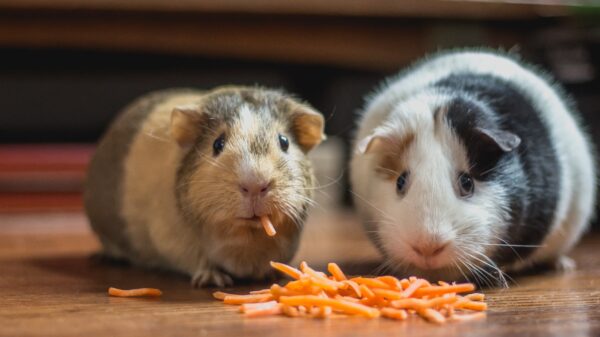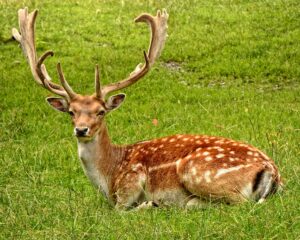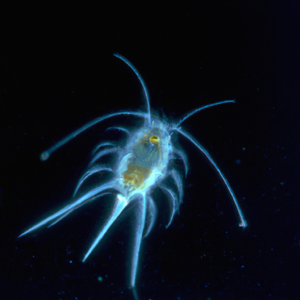
Welcome to the world of insect-eaters, where creatures great and small dine on a diet that might make your skin crawl! From tiny birds that feast on insects to huge mammals that gulp down entire colonies of ants, these animals have found a unique niche in the food chain. In this blog post, we’ll take a fascinating look at some of nature’s most amazing insect-eaters and explore their diets in detail. So get ready for a wild ride as we delve into the weird and wonderful world of animal cuisine!
Introduction to Insect Eating Animals
Insects are a vital food source for many animals, and some creatures have even evolved to specialize in eating them. While most of us think of insects as pests, they play an important role in the diets of many animals.
Insects are a good source of protein and other nutrients, and they are easy to find and catch. Many animals eat insects as part of their regular diet, but some have adapted to eat them almost exclusively. These specialized insectivores have developed features that help them to catch and eat their prey.
Some insect-eating animals, like hedgehogs and anteaters, have long noses that help them sniff out insects hidden in the ground. Others, like bats and dragonflies, have sharp eyesight that allows them to spot their prey from a distance. Some creatures, like Certain lizards and frogs, have sticky tongues that they use to snatch insects out of the air.
While most of us would rather not think about it, insects play an important role in the lives of many animals. The next time you see an insectivore at work, take a moment to appreciate the fascinating way that these creatures have adapted to survive on a diet of bugs.
Different Types of Insect Eating Animals
There are a variety of animals that subsist on diets consisting primarily or entirely of insects. These include well-known animals such as anteaters, certain bats, and many birds, as well as some less familiar creatures such as the aardvark and the pangolin.
One common trait shared by many insectivorous animals is a long, protruding tongue. This adaptation allows them to efficiently capture their prey. Other common features include sharp claws for digging and powerful sense of smell for locating food.
Many animals that eat insects do so because they are an abundant and easy-to-catch food source. Others consume them for the nutritional value they provide or because they help control insect populations that would otherwise damage crops or spread disease.
Whatever the reason, it’s clear that a wide variety of creatures have adapted to survive on diets of bugs!
Evolutionary Adaptations of Insect Eating Animals
Insects are a vital part of the ecosystem, and many animals have adapted to eating them. Insects are high in protein and low in fat, making them a nutritious food source. Some animals, such as anteaters and pangolins, have evolved long tongues and claws to help them catch and eat insects. Other animals, such as bats and birds, use their keen sense of hearing or sight to locate insects. Some animals, such as hedgehogs and tenrecs, roll in the dirt to cover themselves in the scent of insects, which attracts them. And finally, some animals, such as moles and earthworms, dig through the soil to find hidden insect prey.
Benefits of Being an Insect Eater
Insects are a nutritious and sustainable food source for many animals. They are high in protein, fat, and essential nutrients, and their small size means that they can be easily digestible. Insects are also a good source of energy for animals, as they contain more calories per unit than other common animal foods such as fruits and vegetables.
There are many benefits to being an insect eater. Insects provide a nutritious and sustainable food source that is high in protein, fat, and essential nutrients. Their small size also makes them easily digestible, and they offer a good source of energy for animals. Insects are also relatively easy to find and capture, making them an ideal food source for many animals.
Examples of Animal Species that Eat Insects
There are many animal species that eat insects as part of their diet. Some examples include:
-Bats: Bats are well-known for their love of insects, and they consume large numbers of them each year. They use echolocation to locate their prey, and then they swoop down and snatch them out of the air.
– Birds: Many birds are also voracious insect eaters, and they will often feed on them while in flight. Swallows, for example, are known to eat thousands of insects every day.
– Fish: Some fish, such as carp and catfish, will opportunistically feed on insects that fall into the water. They will also consume larvae and pupae that are present in the water.
– Frogs: Frogs will also eat any insects that they can catch, including flies, beetles, and moths. They use their long tongues to snare their prey, which they then swallow whole.
– Lizards: Lizards such as geckos and skinks will readily eat insects. In fact, many lizards specialize in eating ants and termites.
– Snakes: Snakes will also consume a wide variety of insects, including flies, spiders, beetles, and caterpillars.
Common Challenges Faced by Insect Eating Animals

There are a variety of insect eating animals, each with their own unique set of challenges when it comes to finding and consuming insects. Some common challenges faced by these animals include:
-Limited availability of insects: Many insect eating animals live in areas where there is a limited supply of insects. This can make it difficult for these animals to find enough to eat on a daily basis.
-Insects are often hard to catch: Insects are small and quick, making them difficult for some animals to catch. This can be especially challenging for younger or less experienced hunters.
-Dangerous insects: Some insects can be dangerous or poisonous to eat. This can be a deadly mistake for an animal if they consume an insect that is harmful to them.
Impact of Humans on the Diets of Insect Eating Animals
Insect-eating animals have evolved to take advantage of the abundance of insects in their environment. However, human activity can impact the diets of these animals in a number of ways.
For example, agricultural practices can lead to the use of pesticides that can kill or reduce the populations of insects. This can make it difficult for insect-eating animals to find enough food to eat, and can even lead to starvation. Additionally, deforestation can destroy the habitats of many insects, making them unavailable as a food source for insectivores.
Climate change is also likely to impact the diets of insect-eating animals. As temperatures rise and weather patterns become more unpredictable, the populations of some insects may decline while others flourish. This could create imbalances in the food web that could be catastrophic for insect-eating animals.
Ultimately, human activity has the potential to significantly impact the diets of insect-eating animals. It is important to be aware of these impacts so that we can minimise them and help protect these fascinating creatures.
Conclusion
We hope this article has been a fun and informative look into the world of insect-eating animals. As we have seen, there are creatures from all over the planet that feed on insects, each with their own unique strategies for survival. From the giant anteater to the praying mantis, these creatures demonstrate how diverse and fascinating animal diets can be. It is always amazing to see nature at work in such fascinating ways!







